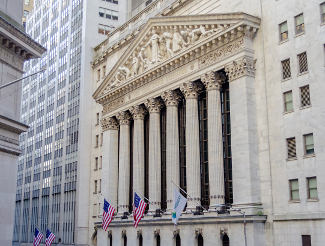If weakness in the stock market earlier this year didn’t wake up investors and make them realize the underlying weak fundamentals of the US economy, hopefully last week’s stock market declines did. Just as much of the stock market’s growth over the past few years has been driven by tech stocks, so has much of the decline been driven by those stocks too. And with tariffs starting to affect international trade and drive up prices for consumers, economic growth will slow to a halt. Investors need to realize what’s around the corner and prepare for another financial crisis.
A decade of unconventional and extraordinarily loose monetary policy has created bubbles throughout the economy. With asset prices elevated in multiple sectors, including housing and stock markets, conditions are ripe for a decline, particularly now that the Fed is slowly and gradually starting to wind down its balance sheet and raise its target interest rate back towards more normal levels.
With an economy that has been addicted to cheap money and credit for the past decade, that isn’t good news. So many companies have become dependent on cheap borrowing to fund their operations that the sudden rise in the cost of doing business will eat into profits and result in a contraction of business. Projects that might have made sense at a 2.5% interest rate may become unprofitable at a 5% interest rate. And with households also still just as indebted as ever, conditions on the demand side aren’t looking good either.
It’s important to remember that stock market performance during the financial crisis didn’t deteriorate overnight. While the first signs of weakness were seen in Bear Stearns in the summer of 2007, markets continued to grow, peaking in October 2007. From there it took nearly a year and a half for markets to reach their lowest level. That gave investors who took an honest look at the economy plenty of time to exit stock markets and protect their assets. While hindsight may be 20/20, how much better is foresight?
Markets are showing the exact same signs today as they were back then. Despite everything you may read in the mainstream financial media that everything is fine and that this is just an overdue and temporary correction, markets are really signaling that there is a great amount of unease about the future. That’s reflected also in higher interest rates, which is making investors nervous.
This is the time for investors to make plans to protect and safeguard their assets. We saw many investors last week move their money into gold as a safe haven to protect against stock market losses. And rest assured, many more will continue to move their retirement assets into gold as stock markets continue to decline over the next year. Those who see the writing on the wall and protect their retirement savings before the worst stock market declines will be those who will be able to weather the next crisis the best and come out way ahead.
This article was originally posted on Goldco.



